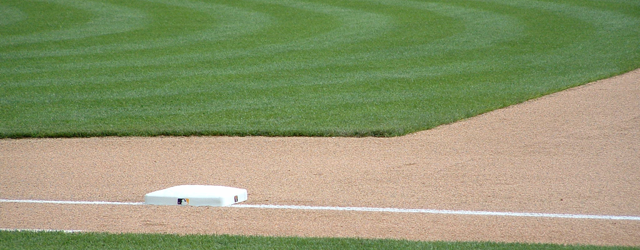 If you are reading this post I will assume you are on this website (and have been on numerous others) in search of baseball knowledge, of how to be a better ballplayer, and how to physically perform in the best capacity you are able. That should be the goal of any athlete that crosses the foul line to take the field. Speaking of goals, what are your goals? Can you get out a paper and pen and define them right now? Drawing a blank? Maybe you think goal setting is much to do about nothing. Maybe you don’t have the time to properly sit down and think about your goals. Many young ballplayers have no idea how to set goals for themselves so that they can reach their highest potential as a baseball player. So, let’s take a look at the how and why of goal setting.
If you are reading this post I will assume you are on this website (and have been on numerous others) in search of baseball knowledge, of how to be a better ballplayer, and how to physically perform in the best capacity you are able. That should be the goal of any athlete that crosses the foul line to take the field. Speaking of goals, what are your goals? Can you get out a paper and pen and define them right now? Drawing a blank? Maybe you think goal setting is much to do about nothing. Maybe you don’t have the time to properly sit down and think about your goals. Many young ballplayers have no idea how to set goals for themselves so that they can reach their highest potential as a baseball player. So, let’s take a look at the how and why of goal setting.
First and foremost, goal setting will give you a clear purpose and direction. Having an objective will cause you to engage in activities that will move you closer to your goal or refrain from things that will hinder your journey to better performance. Your focus will narrow on the task at hand, and you will become more aware of what you truly want from the game. There is a very real difference to defining your specific goals and just “doing your best.” How do you know what your best is if you do not have something to measure it against?
Therefore, as a ballplayer, you need to set realistic and attainable goals. Goals that are too lofty or unreachable will set you up for frustration and loss of motivation. A goal that is too easily reached does not set you up for success either. A well-established goal should challenge the athlete to reach beyond his current limits to see how high he can reach. Furthermore, they should be adjustable. This goes along the same lines as before. A goal that has been established and then is easily reached, or reached sooner than expected, needs to be adjusted so that it continues to motivate and challenge you.
Once you’ve started to think about your goals, begin writing them down. Yes, literally pick up a pen and write them on a piece of paper. Even better, grab a large poster board and marker, and create a giant poster board that you can hang in your room so you can see it everyday. Goals that are written down are not casual goals. The writer (athlete) has thought them through, and he has committed himself to positive and specific behavior in order to achieve what has been written down. And when you need a reminder of what you are striving for, you have a resource you can refer back to by just looking at your piece of paper or poster board.
These written goals should be measurable. This seems simple enough, but stating that you want to be a better hitter does not give you anything to measure against. Instead, stating that you would like to have a batting average of .320 this season gives you a better way to measure your progress. Halfway through the season you’ll be able to see if you are on track, or if you need to adjust your goal higher or lower based on how realistic it is. Can you see how we are coming full circle using our other concepts of goal setting?
These simple methods of goal setting will serve to help you when you are just beginning. Remember, write them down and hold yourself accountable to them. Imagine the ballplayer you can be if you set the tone of success now. And when you achieve success and hit your goals, take out a fresh piece of paper and create for yourself a new set of goals that will take you even further.
Leave a Reply